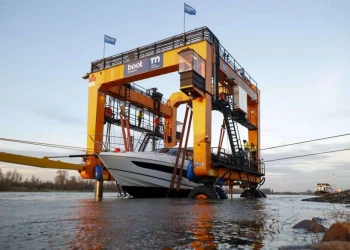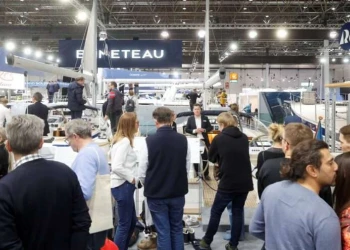
Boot Düsseldorf: Yachts as an investment
Boot Düsseldorf: Yachts as an investment
Yachts as an investment?
Those having their yachts chartered, can save operating costs or even turn them into an investment property. These are the options.
A so far lesser-known segment of yachting is yacht investment and/or charter ownership. This financing model where owners purchase a yacht from a charter operator to then finance it with charter income, has been on the upswing since the pandemic. More and more customers opt to finance their yachts by purchasing a charter yacht – probably also due to boat prices which have gone up some 30%. What exactly is a charter ownership? How does it work and what should future owners hatch out for here?
What does charter ownership mean?
In charter yacht investment programmes private persons purchase a yacht, which is then chartered by a charter operator. The underlying idea is that the charter income helps to fund the boat or, in an ideal world, even yields a profit. Basically, there are three possible objectives for owners interested in purchasing a charter yacht: they can finance the yacht this way to later use it themselves, they can use the charter income to sail the yacht themselves and save the chartering costs, or they simply want to strictly use it as an investment property.
In most cases, however, charter yachts are purchased with a view to financing the yachts. After all, yacht ownership entails high expenditure of time and money: equipment has to be procured, a mooring place and winter storage need organising and insurance to be taken out. Maintenance work presupposes a certain technical understanding and therefore requires quite a bit of time – or money if you do not wish to get your hands dirty. A charter-yacht investment programme, by contrast, allows private persons to become owners without having to invest too much money and time – because the charter operator looks after all these things.
The various charter ownership models
In line with the owners’ objectives there are three different models that are structured more or less the same with nearly all providers.
First, there is the Standard Model, also called Owner Model. Here, the investor purchases a yacht and is registered as the owner in the paperwork and signs a kind of management contract with the charter operator: the charterer takes care of all issues relating to the charter operations, running costs, charter income and maintenance. The costs are paid by the owner – in return the owner receives a share of the charter income generated by their yacht. This management contract can be terminated by the owner at any time, in order to use the yacht themselves. This model offers a number of opportunities but also clear drawbacks: when the charter season is good the owner receives corresponding income, and they have the security of being the registered yacht owner so that their yacht will not form part of the insolvency estate if the charter operator goes bust. If, however, no income is generated for a period, like during the COVID-19 pandemic, costs continue to incur. So the profitability of this model strongly depends on market trends and consumer behaviour. Another benefit of this model is that investors can decide themselves on how long and often they want to use their own yacht. This also allows them to control the revenue stream: if they only use their yacht in the off-season or for the short periods the yacht is not chartered, they can substantially increase the potential income.
A more risk-friendly option is the Guarantee Model. Here, the investor also buys the yacht, is its owner and, hence, is protected against any potential insolvency of the charter operator. As a rule, a Guarantee Model contract has a fixed term of six to seven years – depending on the region and provider. During this term a guaranteed annual income in the form of a percentage of the net purchase price is paid out to the owner. Unlike with the Standard Model the charter operator in the Guaranteed Model bears all the operating costs of the yacht: meaning maintenance, mooring and insurance are covered here. Furthermore, this Model grants the owner guaranteed rights of use of their yacht, which is available to them at no cost. Often, it is even possible to use the free charter weeks on a comparable yacht if the owner wants to head for a different region. The Guarantee Model is, as a rule, the most popular version since it offers all the amenities despite hardly any risks.
Last but not least, there is the so-called Partnership Model where the investor only finances a certain share of their yacht. The remainder is born by the charter operator. Here, too, a contract term is stipulated (as a rule six to seven years) and the owner enjoys exclusive rights of use also on comparable yachts in other regions.
While the charter operator bears the operating costs, the investor does not receive any income in the Partnership Model. At the end of the contract term, the yacht becomes the property of the investor.
Choose the right partner
There are many potential providers in yacht investment – the decision on which company you sign the charter ownership contract with needs careful consideration. You should ask yourself: How long has the company been operating on the charter market? How good is their reputation? Does the company have the charter ownership models on offer that suit me? Can the purchased yacht be located in the desired destination? Does the company offer the yacht manufacturer I prefer?
Needless to say, there are some big players in the charter ownership market who can answer most of these questions satisfactorily. Enclosed please find a list of brokers and charter operators at boot Düsseldorf 2024. There are also many smaller charter operators offering good charter ownership models. Many current charter owners had already been in touch with these companies as charter customers in the past and therefore know about the service and maintenance quality provided on site. Many questions can also be answered in the run-up by contacting other owners.
Investment in big yachts
Next to the big charter fleets of yachts up to 50 feet, there is also another highly attractive charter market. There are also thousands of 24+ m mega yachts chartered worldwide. These are always owned by private owners and operating companies registered in tax havens and marketed by large brokers (list included).
Nearly every yacht available to charter guests in this segment has a so-called Central Agent. He is the first point of contact for all customers and brokers (with customers) when this yacht is to be chartered. The Central Agent markets the yacht to B2C (charter operators) and B2B customers (brokers), manages the booking calendar and handles the administrative tasks for the owner. The Central Agent can, of course, also recruit their own customers for the yachts they manage – as an in-house deal, so to speak – this, however, happens rarely as most enquiries come from external brokers, the so-called retail brokers. If a contract is concluded, the two brokers – the one who manages the boat and the one who canvasses the customer – share the commission. The retail share of the business is more lucrative in terms of commission but also far more unpredictable.
In addition to the weekly price which – roughly speaking – includes the yacht and the crew, the charter operator pays an Advanced Provisioning Allowance (for short: APA) for the ancillary costs incurred during the stay. This includes the fuel for the yacht, tenders and water toys, mooring fees, customs formalities and fees for communication and the Ship Agent. Likewise, provisioning and all beverages are covered by the APA. Customary in the industry is 30% of the charter price; accurate bookkeeping is the responsibility of the skipper of the yacht. A “delivery fee” can incur if guests wish to embark in a harbour that is not the yacht’s home port or differs from the port where the previous charter trip ended. In any case, the charter operator needs to pay VAT in EU member states.
Not a monetary aspect
All of these yachts can be compared with small enterprises. Nearly all of them have a full-time crew – between two and three crew members for 25m yachts, 10 to 14 on 50m yachts and as many as 70 to 100 staff on 100m yachts. Add to this the costs for mooring, repairs, and maintenance. Depending on the condition of the yacht and its owner’s expectations, the annual expenses needed to maintain a yacht amount to five to ten per cent of the purchase price. For 25m yachts the costs including professional management amount to around € 450,000 per year.
In response to the question often asked by owners or potential buyers whether charter income can completely compensate for these expenses, the answer is clearly NO. Considering an estimated six weeks of bookings on average per year, a 25m yacht can probably yield € 200,000 annually, of which € 150,000 - € 160,000 go to the owner. Anyone investing in a yacht needs to consider this purchase beyond monetary aspects. A well-known yacht owner once said: “When you buy a yacht, you want to invest in your own time – and, hence in your happiness and in your network – because anyone owning a yacht also likes sharing it with their friends. Yacht owners consciously enjoy their time on board with the family. Add to this, that yachts can – of course – travel a wide variety of regions – with many of the bigger vessels having a global range, so the options are varied. A yacht is therefore an investment in your own well-being and healthy work-life balance. When you attach value to life on board, the cultural enrichment and time spent with friends – even though you cannot quantify this – then a yacht is an excellent investment.”
List of brokers and charter operators will be enclosed.
The world’s largest yacht and watersports trade fair
Registering just under 237,000 visitors from over 60 countries and more than 1,500 exhibitors from 68 nations occupying 220,000 square metres in Halls 1 to 17, boot Düsseldorf from 20 to 28 January 2024 will be the world’s biggest yacht and watersports trade fair. Both yachtspeople and powerboaters will find a wide variety of boats, dinghies, super boats and luxury yachts. The popular sports diving, surfing, kitesurfing, SUP, skim boarding or canoeing will be presented in all their facets and with the corresponding equipment at boot. Attractive stage activities featuring the stars of the scene, current trends and a high-calibre mix of workshops and join-in activities for both amateur sportspeople and experts, all make this trade fair unique the world over. But marine protection and innovative, sustainable technologies will also be in focus at boot 2024. In cooperation with the European Boating Industry (EBI) the blue innovation dock will provide a unique dialogue format with political, business, technological and media expertise in Hall 10. Furthermore, two beacons for the protection of our oceans will be “on board” again: The prestigious “ocean tribute” Award presented in partnership with the Prince Albert II of Monaco Foundation and the German Ocean Foundation, and the “love your ocean” campaign with its stand in Hall 11.
Marcus Krall





